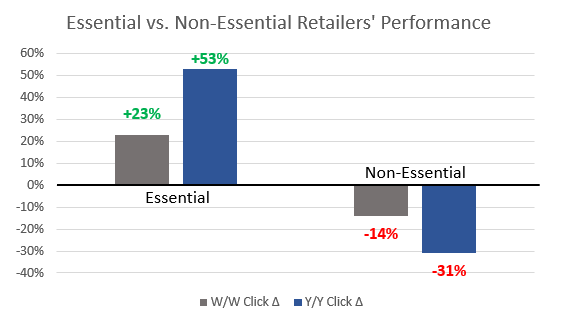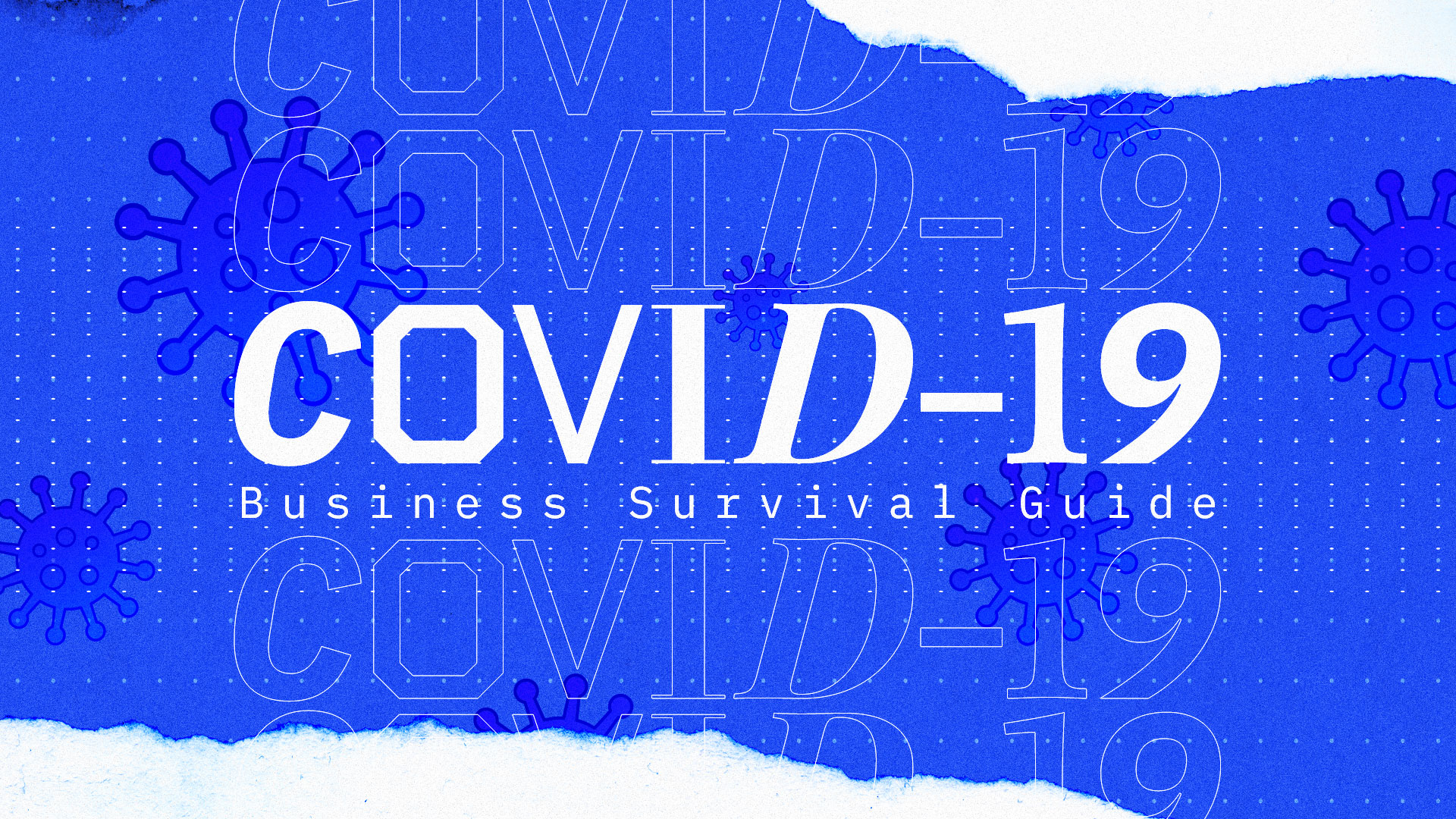“What’s more left to say about the virus outbreak and its effect on the economy?”
When I started the research for this article, I felt bad about it; I didn’t want to look opportunistic. But as I researched more, I realized that this article is precisely what I should be doing- you’ll understand why further down.
The COVID-19, a.k.a the Coronavirus, a.k.a. the thing that made us spend a tremendous amount of time at home (shout out to those who are living all alone) already left a footprint in the worldwide economy. So, the biggest question is not how it’s going to affect the economy, but how it’s going to affect businesses.
If all the negative emotions- like anxiety and fear, were not enough, there are businesses out there that lost a considerable proportion of their revenue (if not all), a thing that only reinforces negative emotions.
All brick and mortar businesses have their doors wide shut, online retail is in a coma, and the only industry experiencing growth is the grocery sector.
This article is an attempt to help everyone in need, to find solutions that will keep their business alive, and why not, even thrive.
1. Apply for government relief.
As I wrote earlier, there are many negative emotions in play right now. It’s normal.
If you want to have a better understanding of your mental state right now, you should read this interview:
That Discomfort You’re Feeling Is Grief.
Your first goal should be to reduce anxiety and increase your control over things.
Most countries already have economic relief programs for businesses in place, so you should check on that for sure.
Depending on the country you’re in, there are different available options. The U.K. has set up a page with all the available options for financial support for businesses during coronavirus.
I could write all the available government economic relief programs from around the world, but Shopify has already done that:
Government Relief Programs for Small Businesses Affected by COVID-19
Now, while an economic relief program from your government will not solve all your problems, it’s a wise place to start.
Making use of available assets is a way of gaining control.
2. Re-evaluate your importance.
I know that this is a tough thing to do.
If you own/run a business, it might mean the world to you. For many of us, realizing that we are not relevant anymore might be a psychological blow; but that doesn’t make the truth less valid.
It’s a fact; people stay at home, so they don’t mind looking to buy things that they have no use for right now. And on top of that, your customers are also people that are struck by the effects of the virus in their workplace.
Consumers reserve their spending on essential things.
Search Engine Journal researched the impact of the coronavirus on the organic performance across retail clients.
In the graph below, you can see the week-over-week (W/W) and year-over-year (Y/Y) organic click changes in essential and non-essential retailers.

A few examples of “essential” businesses:
- Supermarkets and grocery stores.
- Drugstores.
- Gas stations.
- Transportation services.
- Hardware stores.
A few examples of “non- essential” businesses:
- Clothing and retail stores.
- Hair salons.
- Spas.
- Cafes.
- Concert Venues.
If you happen to be on the “essential” side of the map, you’re among the lucky ones. Here are a few tips for you during these times:
- Provide clear instructions to your customers for making their transactions more accessible.
- Don’t treat the COVID-19 outbreak as a trending topic with marketing potential. It’s not kind to the ones suffering from the virus, and it will probably backlash.
- Adjust your messaging based on the situation and who your customers are.
- If you have an increased amount of orders, try to fulfill them ASAP.
- Help someone in need, even if it’s for free. Your kindness is essential, and soothing to others.
Now, if your business is classified as “non-essential,” keep reading. I’m going to give you as many ideas as possible as to what you can do.
You don’t have to be anxious or sad. Knowing where you stand is crucial for your next steps.
3. Craft a survival plan.
If your business belongs to the “non-essential” territory, it’s a fact that it’s going to suffer some losses over this period.
So, it’s evident that you should plan how you’re going to win the game.
Your strategy should consist of two components:
- Your defense.
- Your offense.
Some may argue that this is no time to get on the offense, but I disagree. You see, in this particular phase, waiting equals dying. By no means, I don’t say that you should rush into huge decisions over the future of your brand/company.
I saw a video from Noah Kagan the other day, explaining a plan they put into action for the SUMO group.
Overall, they assumed that they are going to lose 30% of their monthly revenue, and they tried to find ways to still make a 5% profit.
These percentages may vary depending on where your business stand, but it’s a reliable and simple plan you can apply today.
But how are you going to manage to make a profit while suffering revenue loss?
Playing defense.
You need to start from the basics; Pay attention to your business’s financial funnel.
If less money gets into the machine, then you have to cut costs down and also find ways to put a different revenue stream into play.
If you look close enough, you’ll realize that you probably spend a lot of money on things that you either don’t use or that are not vital to you. You can start from the tools and services you’re using, and the cost of the campaigns you’re running.
If things are truly bad, you can make an agreement with your employees for a temporary reduction in their salary (please avoid firing people- be kind).
We recently managed to get around $6K reduction in monthly recurring costs by canceling some tools and services we never use.
Take the offensive.
Let’s say that you managed to cut some monthly expenses. You still need to make some profit.
How should you go about it?
Since you’ve been looking to reduce unnecessary costs, your customers may be trying to do the same thing. My advice is to talk to them.
Call them, text them, leave a comment on their post. Find a way to come in contact.
What you need to learn is what’s important to them during this period. Do they need the kind of service that you offer, but they want a cheaper solution?
You should know.
Subscription-based companies are having a hard time, so if you have a subscription model, maybe it’s time to put something out that people can get by paying once.
That’s another advice given from experience. We are actually doing that kind of one-off payment offer at AppSumo.
I understand that not many of you might not run a SaaS product like us, you’ll need the little hustler living inside you to come out and play.
4. Maybe it’s time to pivot.
We like the word “pivot” only when we read a success story. Otherwise, the thought of it is just dreadful to most of us.
The truth is, that pivoting- under the current circumstances, is a necessary evil for some of us.
Let’s say that you own a business that can’t live online. e.g., A bar.
Your bar is known for its cocktails and excellent music choices. But unfortunately, your customers can’t enjoy your service; they are in lockdown. And you can’t have an online bar.
Or can you?

Your customers still want to have your cocktails, and they are definitely in need of some entertainment other than Netflix.
That’s where your inner hustler comes in.
Maybe you can get your mixologist to make bottle versions of your most famous cocktails, get your D.J. to prepare a Friday night set, hire some people to deliver your drinks, and set up a live stream party with a chat that people will use to socialize.
The entrance fee for the live stream party is one drink.
You can either sell your cocktails and have a party night online, or you can build an app suitable for online parties (if you do this, I want some stocks).
I know that the example might seem stupid, but it’s either trying something or doing nothing.
Now it’s the right time to do the things you’ve ever thought of doing.
TL;DR
Online and offline businesses are affected by the lockdowns due to the outbreak of COVID-19. For many out there, it’s a dark period. But there are ways to increase the chances for business to make it.
Things you should do:
- Apply for government relief.
- Re-evaluate your importance.
- Craft a survival plan.
- Think about pivoting.
I understand that we experience great uncertainty and fear, but we’re going to make it. If you want to save your business, you need to start thinking of ways to protect your customers first.
Stay safe; stay awesome.
The best way out is always through. – Robert Frost
Apostle Mengoulis
Apostle is a core member of the founding team at Viral Loops. He has worked closely with hundreds of referral marketing campaigns made with Viral Loops. Apostle has years of experience in growing and marketing companies and co-founded Growth Hacking University.


1 comment
Absolutely love this article thank you for your positivity and great ideas. You are spot on!!!